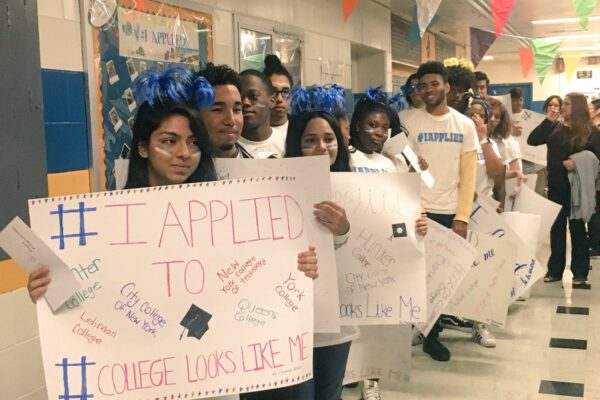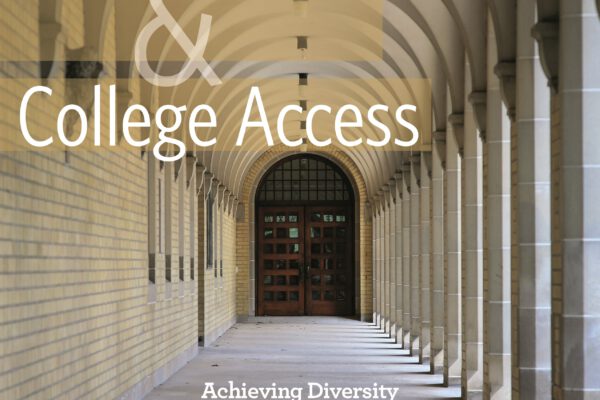ACE’s Lorelle Espinosa and Matthew Gaertner of Pearson’s Center for College & Career Success discuss the takeaways from a recent convening on college access and success for minority and low-income students.
This past July, Hobsons and ACE hosted a small convening of admissions and enrollment management leaders to discuss college access and success for underrepresented minority and low-income students. The day-long discussion was framed by a recent report from ACE, in collaboration with Pearson’s Center for College & Career Success and The Civil Rights Project at the University of California, Los Angeles.
The report, Race, Class, and College Access: Achieving Diversity in a Shifting Legal Landscape, summarizes a first-of-its-kind survey study of admissions and enrollment management leaders at selective colleges and universities. With an emphasis on racial diversity, the findings shed light on the strategies being used in a variety of institutional settings to advance higher education access.
The means by which institutions pursue diversity are inevitably shaped by politics and law. As this landscape shifts, however, one thing does not change: American higher education’s central imperative of educating an increasingly diverse citizenry and making good on its promise to break down longstanding barriers across race and class. As Jamie Lewis Keith of the University of Florida reminded convening attendees, “Law is a design parameter for diversity strategies. You must address it in order to achieve your objectives, but it is not the driver of what you’re doing.”
With this backdrop in mind, several major takeaways emerged:
Institutional Context Matters. Colleges and universities are complex environments with varying missions, student populations, approaches to teaching and learning, and funding models. But some priorities are fundamental, including a commitment to campus racial and ethnic diversity. Attendees articulated the importance of institutional context in their diversity efforts – different institutions are right to employ different strategies depending on not just their definition of diversity, but also their location, the demography of their state, and the makeup of surrounding high schools. Having a variety of tools in one’s toolbox – the consideration of race included – leads to better results.
Access Without Success is an Incomplete Achievement. For all the work that goes into attracting, admitting, and enrolling a diverse class, it is imperative that minority students arrive to a campus environment that celebrates diversity in all forms. Convening participants stressed that student success is dependent on a positive student experience within and outside of the classroom. Positive experiences, in turn, rely on positive campus racial climates that generate meaningful cross-racial interactions and help institutions realize the educational benefits of diversity.
Strong Leadership is Critical. Few people understand the imperative of educating an increasingly diverse American citizenry better than college and university leaders. Presidents and their cabinet, in particular, are uniquely positioned to articulate the importance of campus diversity and how students, faculty, and other constituents benefit from that diversity. Participants emphasized that rhetoric must be backed by action. The most effective diversity strategies tend to require the largest investments of time and human capital, across multiple tiers of support – outreach and recruitment, student support services, faculty engagement, and institutional research are just a few.
More Research is Needed. While the educational benefits of diversity are well established, we’re only beginning to understand how those benefits are pursued and achieved by colleges and universities across the country. The research to practice continuum is vital for the field, especially since much of the on-the-ground work in admissions receives little attention from scholars. Researchers should certainly be sensitive to legal trends, but they also need to have a high touch with the research needs of the practitioner community and equip practitioners with tools and guidance.
At the end of the day, issues of equitable access and changing demographics weigh heavy on the shoulders of American higher education – and rightly so. Fortunately, our colleges and universities have an admirable record of developing innovative solutions to thorny social problems, no matter the political obstacles. As Kedra Ishop shared with us earlier in the year, “The legal landscape may change how we do our work, but it will not change the work that we do.”
For a detailed summary of the convening and its major takeaways, download our white paper.
If you have any questions or comments about this blog post, please contact us.


